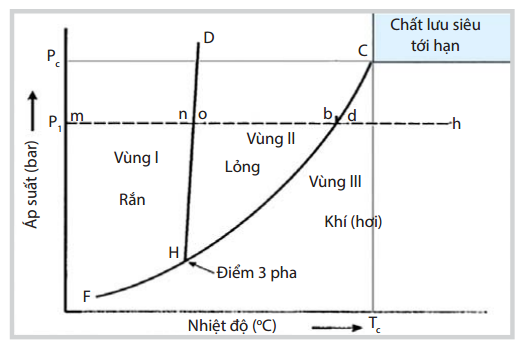Research on the applicability of pumping hydrocarbon solvent- thermochemical system for single-well treatment to enhance heavy oil recovery in Lower Miocene and Upper Oligocene of Rong field
Abstract
The paper presents the research results on the applicability of pumping hydrocarbon solvent-thermochemical system for single-well treatment to increase the oil flow and enhance heavy oil recovery in the Lower Miocene and Upper Oligocene of Rong field. The hydrocarbon solvent recommended for application is liquefied petroleum gas (LPG). The thermochemical system is based on NaNO2 and NH4Cl capable of generating heat and creating pressure. Experimental simulation results on the PVT device at a temperature of 95oC and pressure varying between 100 - 300atm show that LPG drastically reduces the viscosity of the renewable crude oil of Rong field.
References
2. Viện Dầu khí Việt Nam. Báo cáo tổng kết nhiệm vụ nghiên cứu khoa học cấp Ngành “Phân tích, đánh giá các mẫu dầu thô bổ sung cho hệ thống số liệu cơ sở về tính chất dầu thô Việt Nam: Dầu thô mỏ Bạch Hổ, dầu thô mỏ Rồng”.
3. Отчет о научно - иccледователъской работе "Разработка техноло-гическних решений по совершенствованию системы сбора, подготовки, транспорта и хранения нефти и газа на месторождениях СП Вьетсовпетро". 12/2003.
4. J.C.Allen, C.D.Woodward, A.Brown, C.H.Wu. Multiple solvent heavy oil recovery method. Assignee Texaco Inc., New York. United States Patent 3954141, Appl. No. 546,580. 1976.
5. R.M.Butler I.J.Mokrys. Closed-loop extraction method for the recovery of heavy oils and bitumens underlain by aquifers: the Vapex process. Journal of Canadian Petroleum Technology. 1998; 37(4): p. 41 - 50.
6. V.Ferron, C.Losi, H.J.Moreno, D. M.Piña, A.Terradillos. Enhanced oil recovery using natural gas in heavy oil fields. 2010.
7. H.Abukhalifeh. Determination of concertration- dependent dispersion of propane in vapor extraction of heavy oil. Chemical Engineering. Ryerson University. 2010.
8. Muhamad, Hameed. Optimal control of vapor extraction of heavy oil. Theses and dissertations. 2012.
9. M.M.Kulkarni. Immiscible and miscible gas-oil displacements in porous media. 2003.
10. Sigurd í Jákupsstovu, D.Zhou, J.Kamath, L.Durlofsky, E.H.Stebby. Upscaling of miscible displacement processes. Proceedings of the 6th Nordic Sumposium on Petrophysics, Trondheim, Norway. 15 - 16 May 2001.
11. F.B.Thomas, T.Okazawa, A.Erian, D.B.Bennion, D.W.Bennion. Does miscibility matter in gas injection?. Petroleum Society of Annual Technical Meeting, Canada Alberta, Canada. 7 - 9 June, 1995.
12. L.Hinderaker, R.H.Utseth, O.S.Hustad, I.Akervoll, M.Dalland, B.A.Kvanvik, T.Austad, J.E.Paulsen. RUTH-A comprehensive Norwegian R&D program on IOR. SPE-3684- MS. European Petroleum Conference, Milan, Italy. 22 - 24 October, 1996.
13. R.E.Hadlow. Updateofindustryexperiencewith CO2 injection. SPE-24928-MS. SPE Annual Technical Conference and Exhibition, Washington D.C. 4 - 7 October, 1992.
14. J.R.Christensen, E.H.Syte, A.Skauge. Review of the WAG field experience. SPE-39883-MS. International Petroleum Conference and Exhibition, Villhermosa, Mexico. 3 - 5 March, 1998.
15. А.И.Брусиловскии. Фазовые превращения при разработке месторождений ефти и газа. Издательскийдом «Грааль». Москва 2002.
16. Nguyen Anh Duc, Flavio Faria de Moraes, H.Scott Fogler. Fused chemical reactions. 3. Controlled release of a catalyst to control the temperature profile in tubular reactors. Industrial and Engineering Chemistry Research. 2004; 43(18): p. 5862 - 5873.
17. Sarkar, Arrington, Powell. Methods and compositions for thermally treating a conduit used for hydrocarbon production or transmission to help remove paraffin wax buildup. US Patent 20080067108A1. 2008.

1. The Author assigns all copyright in and to the article (the Work) to the Petrovietnam Journal, including the right to publish, republish, transmit, sell and distribute the Work in whole or in part in electronic and print editions of the Journal, in all media of expression now known or later developed.
2. By this assignment of copyright to the Petrovietnam Journal, reproduction, posting, transmission, distribution or other use of the Work in whole or in part in any medium by the Author requires a full citation to the Journal, suitable in form and content as follows: title of article, authors’ names, journal title, volume, issue, year, copyright owner as specified in the Journal, DOI number. Links to the final article published on the website of the Journal are encouraged.




